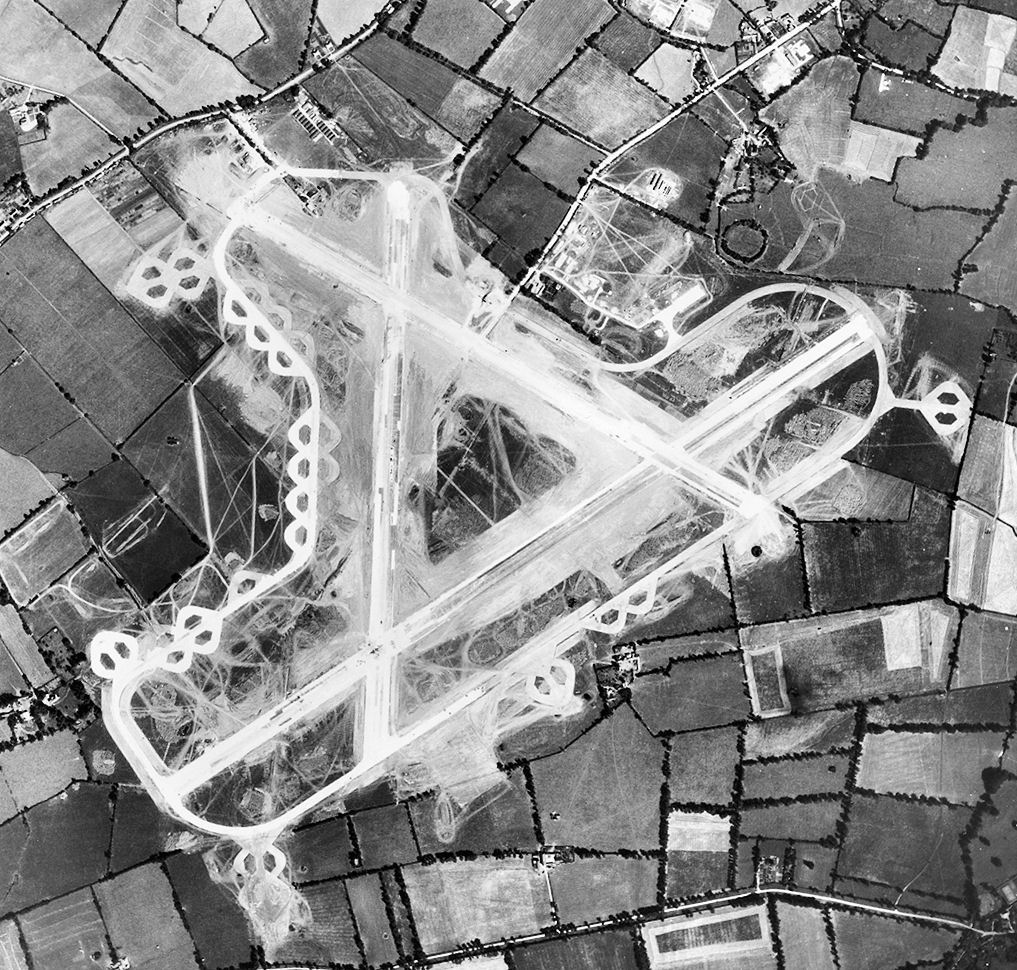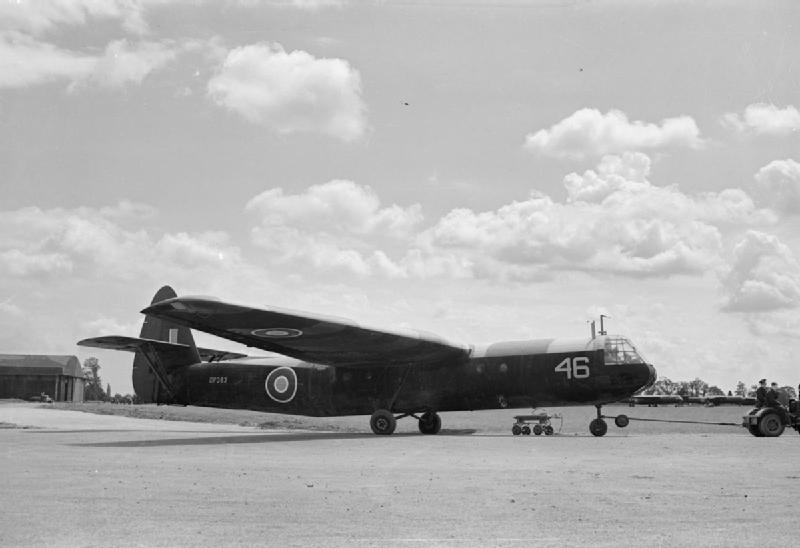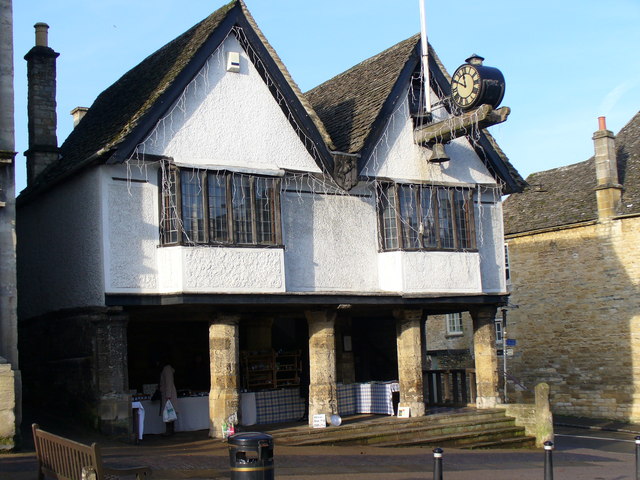|
RAF Broadwell
Royal Air Force Broadwell or more simply RAF Broadwell is a former Royal Air Force station located 2 miles north of Broadwell and 3 miles southeast of Burford, Oxfordshire, and within 2 miles of RAF Brize Norton. It opened on 15 November 1943, operating under RAF Transport Command, and closed on 31 March 1947. It had three concrete runways in a triangular configuration. History No. 512 Squadron and No. 575 Squadron were based here, flying the Douglas Dakota. In February 1944, No. 512 Squadron was transferred to No. 46 Group at RAF Broadwell. It was a tactical Dakota squadron and started training glider towing and parachute dropping. Its first operation in the new role was a leaflet drop on 17 April 1944 over France; this was followed by intensive flying in and out of France, including dropping parachutists at Arnhem. In fact, 512 Squadron can claim that they were the first planes over on D Day as 3 Dakotas piloted by Fl Lt Hyde, W.O. James Proctor and a C Flight Flying Of ... [...More Info...] [...Related Items...] OR: [Wikipedia] [Google] [Baidu] |
Broadwell, Oxfordshire
Broadwell is a village and civil parish about south-west of Carterton in West Oxfordshire. The 2011 Census recorded the parish's population as 218. Parish church The Church of England parish church of Saints Peter and Paul is a late Norman church built in about 1190. In about 1250 the bell tower and octagonal spire were built, the north and south transepts were added, the chancel remodelled and an arch was inserted in the north wall of the chancel, linking it to a new north chapel. The south wall of the chancel also has a window added early in the 14th century. A Perpendicular Gothic arch linking the north transept and chapel was inserted. In the 15th century a stair-turret was added to reach a room over the north transept. The church was restored under the direction of E.G. Bruton in 1873. It is a Grade I listed building. The tower has an historic ring of five bells from the 14th to the 17th centuries, plus a more recent Sanctus bell. Currently all are unringable. The s ... [...More Info...] [...Related Items...] OR: [Wikipedia] [Google] [Baidu] |
Douglas C-47 Skytrain
The Douglas C-47 Skytrain or Dakota (RAF, RAAF, RCAF, RNZAF, and SAAF designation) is a military transport aircraft developed from the civilian Douglas DC-3 airliner. It was used extensively by the Allies during World War II and remained in front-line service with various military operators for many years.Parker 2013, pp. 13, 35, 37, 39, 45-47. Design and development The C-47 differed from the civilian DC-3 by way of numerous modifications, including being fitted with a cargo door, hoist attachment and strengthened floor - along with a shortened tail cone for glider-towing shackles, and an astrodome in the cabin roof.Wilson, Stewart. ''Aircraft of WWII''. Fyshwick, ACT, Australia: Aerospace Publications Pty Ltd., 1998. . During World War II, the armed forces of many countries used the C-47 and modified DC-3s for the transport of troops, cargo, and wounded. The U.S. naval designation was R4D. More than 10,000 aircraft were produced in Long Beach and Santa Monica, California, ... [...More Info...] [...Related Items...] OR: [Wikipedia] [Google] [Baidu] |
Airspeed Horsa
The Airspeed AS.51 Horsa was a British troop-carrying glider used during the Second World War. It was developed and manufactured by Airspeed Limited, alongside various subcontractors; the type was named after Horsa, the legendary 5th-century conqueror of southern Britain. Having been greatly impressed by the effective use of airborne operations by Germany during the early stages of the Second World War, such as during the Battle of France, the Allied powers sought to establish capable counterpart forces of their own. The British War Office, determining that the role of gliders would be an essential component of such airborne forces, proceeded to examine available options. An evaluation of the General Aircraft Hotspur found it to lack the necessary size, thus Specification ''X.26/40'' was issued. It was from this specification that Airspeed Limited designed the Horsa, a large glider capable of accommodating up to 30 fully equipped troops, which was designated as the ''AS 51''. ... [...More Info...] [...Related Items...] OR: [Wikipedia] [Google] [Baidu] |
5 Para
The 5th (Scottish) Parachute Battalion was an airborne infantry battalion of the Parachute Regiment, raised by the British Army during the Second World War. The four proceeding British parachute infantry battalions had been raised by volunteers from all ranks of the army. The 5th (Scottish) Parachute Battalion was formed by the conversion of the 7th Battalion, Queen's Own Cameron Highlanders together with volunteers from other Scottish regiments for parachute duties. The 5th (Scottish) Parachute Battalion was assigned to the 2nd Parachute Brigade, which at the time, was part of the 1st Airborne Division. The battalion fought in a number of actions in Italy, Greece and the south of France, where they carried out their only parachute assault of the war, during Operation Dragoon. At the end of the war, now attached to the 6th Airborne Division, the battalion was posted to Palestine, in an internal security role. By 1948 the battalion was one of only three Regular Army parachute ... [...More Info...] [...Related Items...] OR: [Wikipedia] [Google] [Baidu] |
RAF Blakehill Farm
Royal Air Force Blakehill Farm or more simply RAF Blakehill Farm is a former Royal Air Force station southwest of Cricklade in Wiltshire, England, operational between 1944 and 1952. History The station was originally allocated to the United States Army Air Forces Ninth Air Force but not used. It opened in 1944 and was home for transport aircraft of No. 46 Group RAF Transport Command. In 1948 the airfield was a satellite of RAF South Cerney, and was used by training aircraft until the airfield closed in 1952 and was returned to agricultural use. The site is now a Wiltshire Wildlife Trust nature reserve. Units and aircraft The following units were also here at some point: * No. 18 Terminal Staging Post * No. 19 Terminal Staging Post * No. 92 (Forward) Staging Post * No. 93 (Forward) Staging Post * No. 123 (Major) Staging Post * No. 2748 Squadron RAF Regiment * No. 2835 Squadron RAF Regiment Post-war intelligence role In 1967, GCHQ set up an "experimental radio station", ... [...More Info...] [...Related Items...] OR: [Wikipedia] [Google] [Baidu] |
RAF Down Ampney
Royal Air Force Down Ampney or more simply RAF Down Ampney is a former Royal Air Force station located north east of Cricklade, Wiltshire and south west of RAF Fairford, Gloucestershire. The airfield operated during the Second World War from February 1944 until February 1947. Down Ampney was part of a group of airfields dedicated to air transportation, alongside RAF Broadwell and RAF Blakehill Farm. Based units No. 48 Squadron RAF and No. 271 Squadron RAF flew Douglas Dakotas on major missions. On D-Day they dropped the main elements of the 3rd Parachute Brigade The 3rd Parachute Brigade was an airborne forces brigade raised by the British Army during the Second World War. The brigade was initially part of the 1st Airborne Division, but remained in Britain when that division was sent overseas, and becam ... in Normandy as well as towing Airspeed Horsa gliders across the English Channel. They were also active in Operation Market Garden (Arnhem) and the Rhine crossing ... [...More Info...] [...Related Items...] OR: [Wikipedia] [Google] [Baidu] |
D-Day
The Normandy landings were the landing operations and associated airborne operations on Tuesday, 6 June 1944 of the Allied invasion of Normandy in Operation Overlord during World War II. Codenamed Operation Neptune and often referred to as D-Day, it was the largest seaborne invasion in history. The operation began the liberation of France (and later western Europe) and laid the foundations of the Allied victory on the Western Front. Planning for the operation began in 1943. In the months leading up to the invasion, the Allies conducted a substantial military deception, codenamed Operation Bodyguard, to mislead the Germans as to the date and location of the main Allied landings. The weather on D-Day was far from ideal, and the operation had to be delayed 24 hours; a further postponement would have meant a delay of at least two weeks, as the invasion planners had requirements for the phase of the moon, the tides, and the time of day that meant only a few days each month were d ... [...More Info...] [...Related Items...] OR: [Wikipedia] [Google] [Baidu] |
Operation Market Garden
Operation Market Garden was an Allies of World War II, Allied military operation during the World War II, Second World War fought in the Netherlands from 17 to 27 September 1944. Its objective was to create a Salient (military), salient into German territory with a bridgehead over the River Rhine, creating an Allies of World War II, Allied invasion route into northern Germany. This was to be achieved by two sub-operations: seizing nine bridges with combined U.S. and British airborne forces (Market) followed by land forces swiftly following over the bridges (Garden). The airborne operation was planned and undertaken by the First Allied Airborne Army with the land operation by XXX Corps (United Kingdom), XXX Corps of the Second Army (United Kingdom), British Second Army.The Battle for the Rhine 1944 by Robin Neillands, Chapter 4 The Road to Arnhem Although the largest airborne operation of the war up to that point, Market Garden's ultimate outcome remains debated: The operation s ... [...More Info...] [...Related Items...] OR: [Wikipedia] [Google] [Baidu] |
RAF Broadwell Summary001
The Royal Air Force (RAF) is the United Kingdom's air and space force. It was formed towards the end of the First World War on 1 April 1918, becoming the first independent air force in the world, by regrouping the Royal Flying Corps (RFC) and the Royal Naval Air Service (RNAS). Following the Allied victory over the Central Powers in 1918, the RAF emerged as the largest air force in the world at the time. Since its formation, the RAF has taken a significant role in British military history. In particular, it played a large part in the Second World War where it fought its most famous campaign, the Battle of Britain. The RAF's mission is to support the objectives of the British Ministry of Defence (MOD), which are to "provide the capabilities needed to ensure the security and defence of the United Kingdom and overseas territories, including against terrorism; to support the Government's foreign policy objectives particularly in promoting international peace and security". The RAF ... [...More Info...] [...Related Items...] OR: [Wikipedia] [Google] [Baidu] |
Oxfordshire
Oxfordshire is a ceremonial and non-metropolitan county in the north west of South East England. It is a mainly rural county, with its largest settlement being the city of Oxford. The county is a centre of research and development, primarily due to the work of the University of Oxford and several notable science parks. These include the Harwell Science and Innovation Campus and Milton Park, both situated around the towns of Didcot and Abingdon-on-Thames. It is a landlocked county, bordered by six counties: Berkshire to the south, Buckinghamshire to the east, Wiltshire to the south west, Gloucestershire to the west, Warwickshire to the north west, and Northamptonshire to the north east. Oxfordshire is locally governed by Oxfordshire County Council, together with local councils of its five non-metropolitan districts: City of Oxford, Cherwell, South Oxfordshire, Vale of White Horse, and West Oxfordshire. Present-day Oxfordshire spanning the area south of the Thames was h ... [...More Info...] [...Related Items...] OR: [Wikipedia] [Google] [Baidu] |
RAF Brize Norton
Royal Air Force Brize Norton or RAF Brize Norton in Oxfordshire, about west north-west of London, is the largest station of the Royal Air Force. It is close to the village of Brize Norton, and the towns of Carterton and Witney. The station is the base for air transport, air-to-air refuelling and military parachuting, with aircraft operating from the station including the Lockheed C-130 Hercules, Boeing C-17 Globemaster III, Airbus A400M Atlas and Airbus Voyager which replaced the now-decommissioned Vickers VC10 in September 2013 and the Lockheed TriStar in March 2014. Major infrastructure redevelopment began in 2010, ahead of the closure of RAF Lyneham in 2012, and Brize Norton became the sole air point of embarkation for British troops. History Royal Air Force Construction of RAF Brize Norton began in 1935 with the official opening taking place on 13 August 1937. The station was originally to be named RAF Carterton, given its proximity and relationship with the town of ... [...More Info...] [...Related Items...] OR: [Wikipedia] [Google] [Baidu] |
Burford
Burford () is a town on the River Windrush, in the Cotswolds, Cotswold hills, in the West Oxfordshire district of Oxfordshire, England. It is often referred to as the 'gateway' to the Cotswolds. Burford is located west of Oxford and southeast of Cheltenham, about from the Gloucestershire boundary. The Toponymy, toponym derives from the Old English words ''burh'' meaning fortified town or hilltown and ''ford (crossing), ford'', the crossing of a river. The United Kingdom Census 2011, 2011 Census recorded the population of Burford parish as 1,422. Economic and social history The town began in the History of Anglo-Saxon England, middle Saxon period with the founding of a village near the site of the modern priory building. This settlement continued in use until just after the Norman conquest of England when the new town of Burford was built. On the site of the old village a hospital was founded which remained open until the Dissolution of the Monasteries by Henry VIII of Englan ... [...More Info...] [...Related Items...] OR: [Wikipedia] [Google] [Baidu] |







